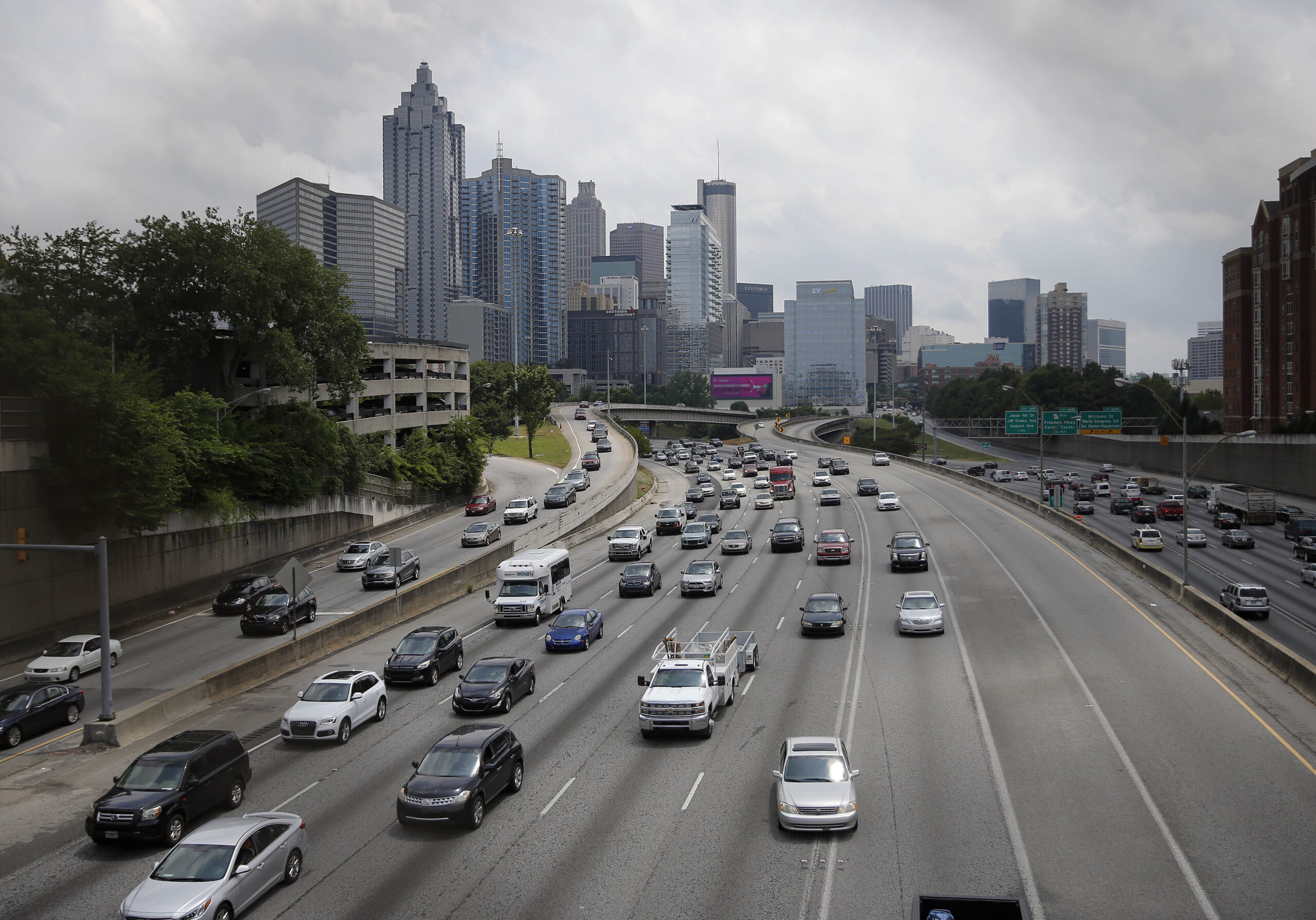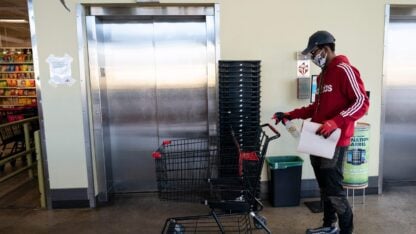How Shelter-In-Place Orders Affected Atlanta’s Air Pollution

John Bazemore / Associated Press file
In Atlanta, it’s getting hot and traffic is coming back, which means air quality will go downhill.
Still, if it seemed like this spring the air was better while so many people were sheltering in place, that’s because it was, at least in some respects.
In March, people started staying home because of the coronavirus. In April, it became mandatory statewide. And that had a dramatic effect on traffic.
On the Perimeter, for example, before the shutdown, there were about 217,000 vehicles a day, according to Christina Fuller, a public health and air pollution expert at Georgia State. After the governor’s shelter-in-place order, the number came down to about 133,000 a day, she said.
“That’s almost a 40% decrease in cars and trucks that are on the highways,” she said.
And that had an effect on particulate matter, a pollutant from tailpipes and smokestacks that can contribute to conditions including asthma and heart disease. Using data from air monitors in Atlanta, including along roads, Fuller said she could see that levels of particulate matter had dropped.
“They’ve been consistently lower in the air, especially for the month of April,” she said.
The change can’t necessarily all be attributed to people not driving because weather can have an effect: rain can temporarily lower levels of particulate matter, while cooler temperatures can lead to an increase. So there will need to be more analysis to sort things out, Fuller said.
Pulling back, changes were apparent on a bigger scale, too.
NASA scientist Bryan Duncan, who’s a Georgia Tech alumnus, uses satellites to study air quality. One pollutant in particular that he looks at is nitrogen dioxide, another one that affects people’s health.

It has a relatively short lifetime. Once it’s emitted, it’s around only for a matter of hours. So researchers can see hot spots where it’s coming from.
“Over cities, over power plants, sometimes major highways. So it’s a great indicator of pollution in general,” Duncan said.
In March and April, he said, nitrogen dioxide levels over a lot of the East Coast, including Atlanta, decreased by about 30% to 40%.
Like Fuller, he cautioned that there has to be more analysis to figure out exactly what happened where, and to sort out what’s because of changes in human behavior versus the weather.
Still, he said, “It’s absolutely dramatic.”
But there’s a lot of different kinds of pollution out there, and not everything is so clear.
Ozone, for instance, is more complicated to untangle.
“Ozone’s a really neat pollutant,” said Ted Russell, a professor of environmental engineering at Georgia Tech, where he studies air quality.
During the spring, ozone levels are typically lower in Atlanta. And it’s not a pollutant that comes directly from cars or industrial sources. Instead, it’s a result of emissions from those sources – but also from trees – reacting to sunlight.
A recent analysis by NPR found that even though traffic has been down around the country, ozone hasn’t dropped nearly as much as expected. Russell said that’s not surprising, since ozone doesn’t come directly from traffic and it’s so affected by season and weather.
“When I look at the air quality data for ozone, it’s not that clear at all, and in part because the meteorology plays such a big role,” he said. “So for ozone, we really can’t tell if it’s the meteorology that’s making the biggest difference day to day or the emissions.”
All these pollutants — particulate matter, ozone and nitrogen dioxide – are things that affect people’s health, not the greenhouse gases that contribute to climate change.
With carbon dioxide – which also comes from tailpipes and smokestacks — it’s harder to see local effects. There is a lot of it, and it’s long-lived. So it’s all just muddled in the atmosphere, not at certain hot spots. Nationwide, carbon emissions have gone down, but — like the other pollutants — are likely to come back up.
Still, Duncan said maybe pollution won’t bounce back quite as much. He’s learned he likes telecommuting, and he hopes to continue doing it a couple days a week.
“And I think other people may realize that, too,” he said.
People may also get new insight into the connection between their cars and air quality, said Fuller.
“Because it may be difficult for people to think, ‘Oh, when I’m driving my car, then what does that do? How much can I contribute?’ But we see that as a group, it really does make a big difference,” she said.
She said that if people want to keep seeing cleaner air going forward, there are going to have to be bigger changes in policy and in planning.








